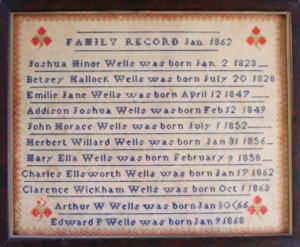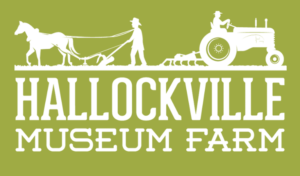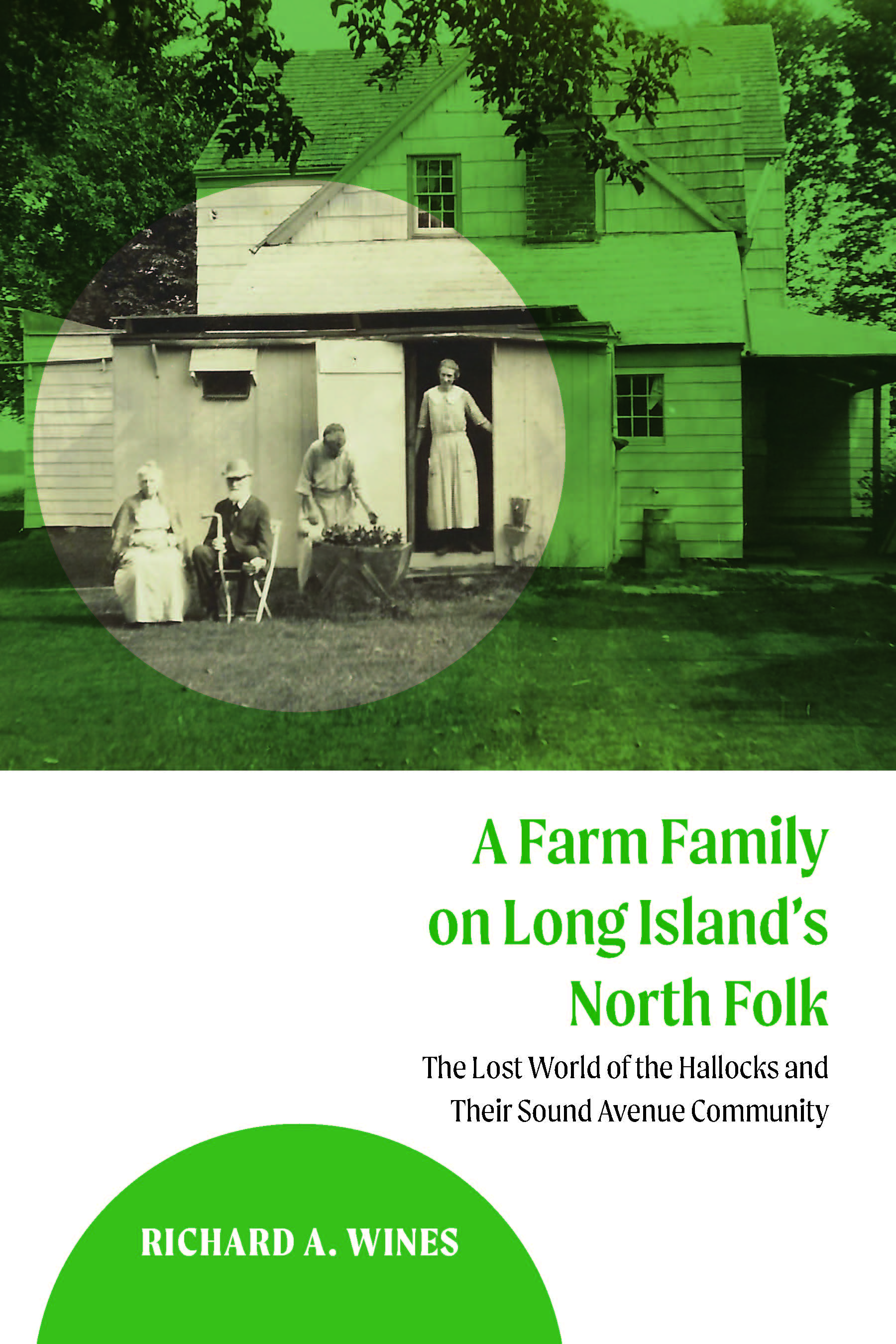A FARM FAMILY ON LONG ISLAND’S NORTH FORK
The Lost World of the Hallocks and Their Sound Avenue Community
Richard A. Wines
Life, love, and scandal in a 19th century Long Island farm community.
This book by Hallockville Museum Farm board member Richard Wines traces the history of a vital agricultural community on the North Fork of Long Island through the story of the last family to live in the museum’s old Homestead. For well over two centuries, community members were almost all descendants of the same group of 17th century Puritan founders. Yet, despite their shared heritage and complex interrelationships, cultural wars raged. Family members and the community divided bitterly on issue after issue, ranging from whether to allow a melodeon into the church to supporting abolitionism. The community weathered many changes — the Civil War, the emergence of new agricultural technologies, the arrival of Eastern European immigrants, even an attempt to build a string of nuclear power plants in the 20th century. Deep dives into one community’s history uncover stories about slavery, racism, and prejudice that many have chosen to forget, as well as stories of compassion or human tragedy we want to remember. It will appeal to those interested in Long Island regional history, and the larger history of rural communities throughout New York and the United States. It is the story of people coming to terms with change.
.
Supplemental Material (click on the titles below):
Sampler made by Emilie Hallock as a 15-year-old
In the days before the ready availability of store-bought clothing, young girls made samplers like this to demonstrate their ability with thread and needle – a critical skill that future husbands would seek. Emilie Jane Wells embroidered this sampler in 1862 when fifteen. It worked. She became the second Mrs. Halsey Hallock just four years later. The sampler shows her parents and siblings. Her mother had two more sons after Emilie completed the piece, forcing her to tear out a row of flowers on the bottom and squeeze in the names of her newest brothers. [Collection of Hallockville Museum Farm, photo courtesy of Mary Anne Huntington].

Genealogy chart prepared by Bessie Hallock
With her deep interest in family history, Bessie Hallock prepared this genealogy chart with herself and her siblings in the center. She names all 16 of her great-great great-grandparents and 30 out of 32 of her great-great-great great-grandparents. But, in the ninth ring out, which included first generation ancestors such as William Hallock, she only managed to fill about half of the 256 spaces. Source: Collection of the Suffolk County Historical Society. Used with permission.
1859 farm map from Halsey Hallock’s Diary
Sound Avenue (labeled “Main Road) runs through the middle. The upper right part of the map is the farm of next-door neighbor John Hallock. Some of their best fields as well as 48 acres of woodland were on the south side of Sound Avenue. Source: Hallockville Museum Farm.
1860 farm map from Halsey Hallock’s Diary
Shows the part of the farm north of Sound Avenue as well as a list of crops grown that year. Note the insert sketch of the house and barn in bottom center. Source: Hallockville Museum Farm.
Lamb Triplets Picture 1, Picture 2
In response to the American Agriculturalist’s request for triplet photos, the Hallocks sent in Bessie’s 1931 photo their ewe with three lambs and stated that “this is the best this family can furnish.” Source: Hallockville Museum Farm.
Built in 1912 on the bluffs overlooking Long Island Sound at the north end of their farm. Bessie Hallock photo. Source: Hallockville Museum Farm.
Showing cliffs along Long Island Sound Shore looking towards Mattituck. Bessie Hallock photo. Source: Hallockville Museum Farm.

